APAC Oral Anti-Diabetic Drug Market Size
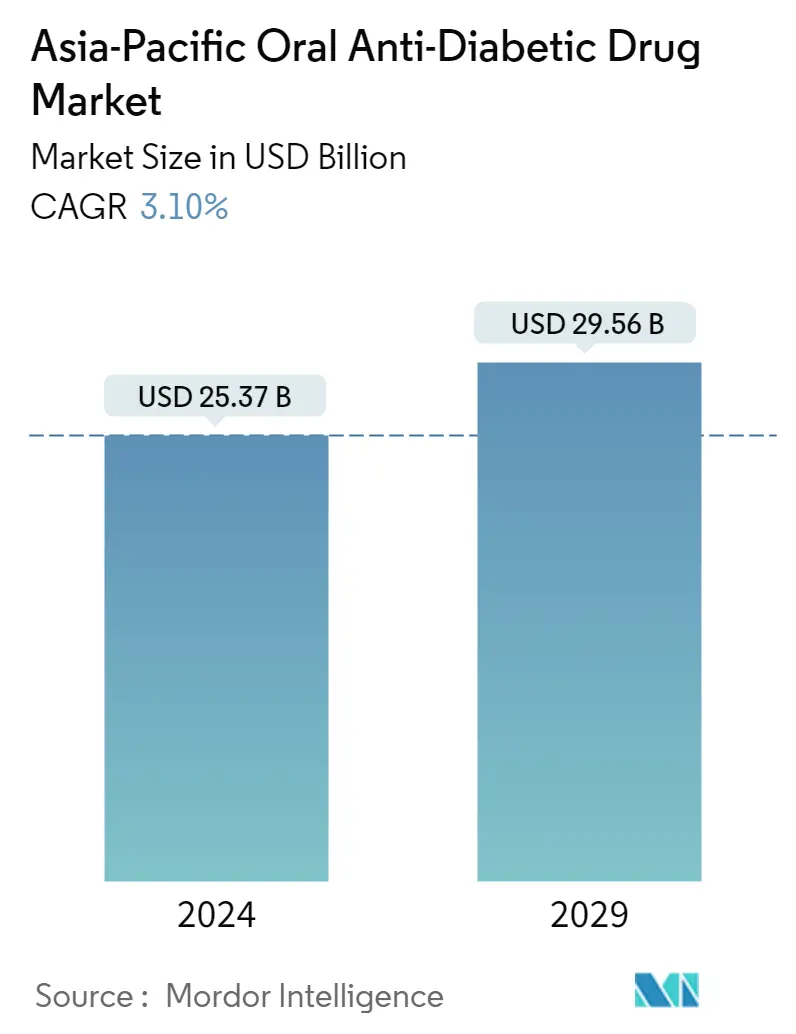
| Study Period | 2019 - 2029 |
| Base Year For Estimation | 2023 |
| Forecast Data Period | 2024 - 2029 |
| Market Size (2024) | USD 25.37 Billion |
| Market Size (2029) | USD 29.56 Billion |
| CAGR (2024 - 2029) | 3.10 % |
Major Players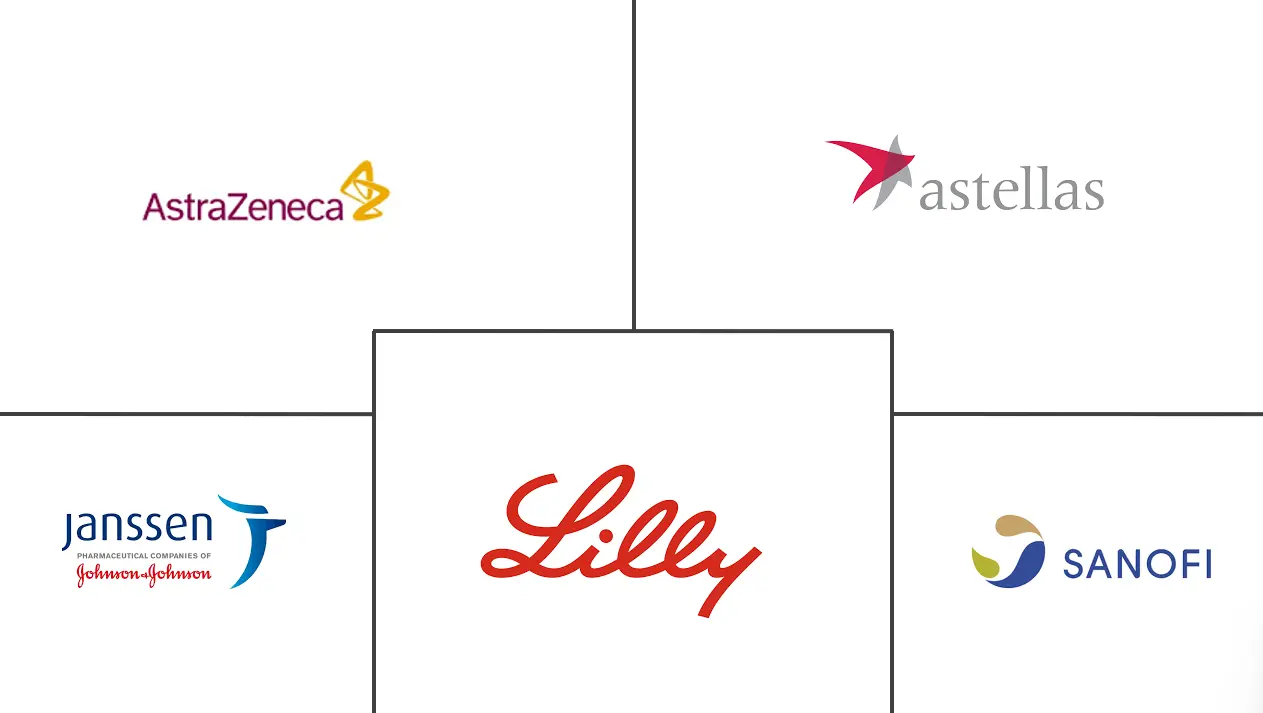
*Disclaimer: Major Players sorted in no particular order |
APAC Oral Anti-Diabetic Drug Market Analysis
The Asia-Pacific Oral Anti-Diabetic Drug Market size is estimated at USD 25.37 billion in 2024, and is expected to reach USD 29.56 billion by 2029, growing at a CAGR of 3.10% during the forecast period (2024-2029).
COVID-19 caused a gradual rise in demand for diabetes medications in the Asia-Pacific region. Patients with COVID-19 and pre-existing diabetes had blood glucose level changes, according to a study by BeatO in 2021 on 800 people, which finally resulted in a significant demand for cutting-edge medications to treat diabetes. In order to decrease the severe effects of COVID-19, Novo Nordisk has introduced a new social responsibility strategy to fight diabetes and give patients access to low-cost diabetes care in every nation.
Asian nations have seen a sharp rise in the number of people with diabetes over the past few decades, particularly those with type 2. More than 70% of people with diabetes live in developing nations. The Asia-Pacific region is expected to see significant growth as a result of an aging population and an increase in diabetes prevalence, which is mostly caused by increased stress levels, sedentary lifestyles, smoking, and excessive alcohol use that raises blood sugar levels. Also, the production infrastructure of some antidiabetic medicine manufacturers in the area contributed to the market expansion. However, one of the main commercial restraints is thought to be the rising cost of pharmaceuticals.
Biguanides, sulfonylureas, meglitinide, thiazolidinedione (TZD), dipeptidyl peptidase 4 (DPP-4) inhibitors, sodium-glucose cotransporter (SGLT2) inhibitors, glucosidase inhibitors are the main groups of oral antidiabetic drugs.
APAC Oral Anti-Diabetic Drug Market Trends
Biguanide Segment Occupied the Highest Market Share in the Asia-Pacific Oral Anti-Diabetic Drugs Market in 2022
Biguanide-class medication metformin is used to treat type 2 diabetes. It is prescribed for its "off-label" use in treating patients with illnesses like insulin resistance. Since the advent of metformin therapy, numerous individuals have been successfully treated with this widely available medication with a favorable risk/benefit ratio, and it is recommended by IDF guidelines as a first-line prescription. As a result, metformin-which is administered in 45-50% of all prescriptions and is taken by more than 150 million individuals each year-remains the most frequently prescribed oral antidiabetic medication worldwide. Due to long-term positive experience with metformin use, strong evidence of clinical efficacy, safety, high adherence rate, low cost, widespread availability, and cost-effectiveness, the drug has a sizable market share. According to the World Health Organization, metformin is one of the "medicines that satisfy the priority of healthcare demands of the public."
In recent years, diabetes prevalence has alarmingly increased in the Asia-Pacific region. Diabetes is becoming more prevalent than ever in developing nations like China and India. People with diabetes need to make several adjustments during the day to keep their blood glucose levels within acceptable ranges. Examples include taking oral anti-diabetic medicine or consuming more carbs while keeping an eye on their blood glucose levels. Leading manufacturers are concentrating on technological advancements and the creation of cutting-edge items to capture a sizeable portion of the market.
Owing to the aforementioned factors, the market is expected to grow during the forecast period.
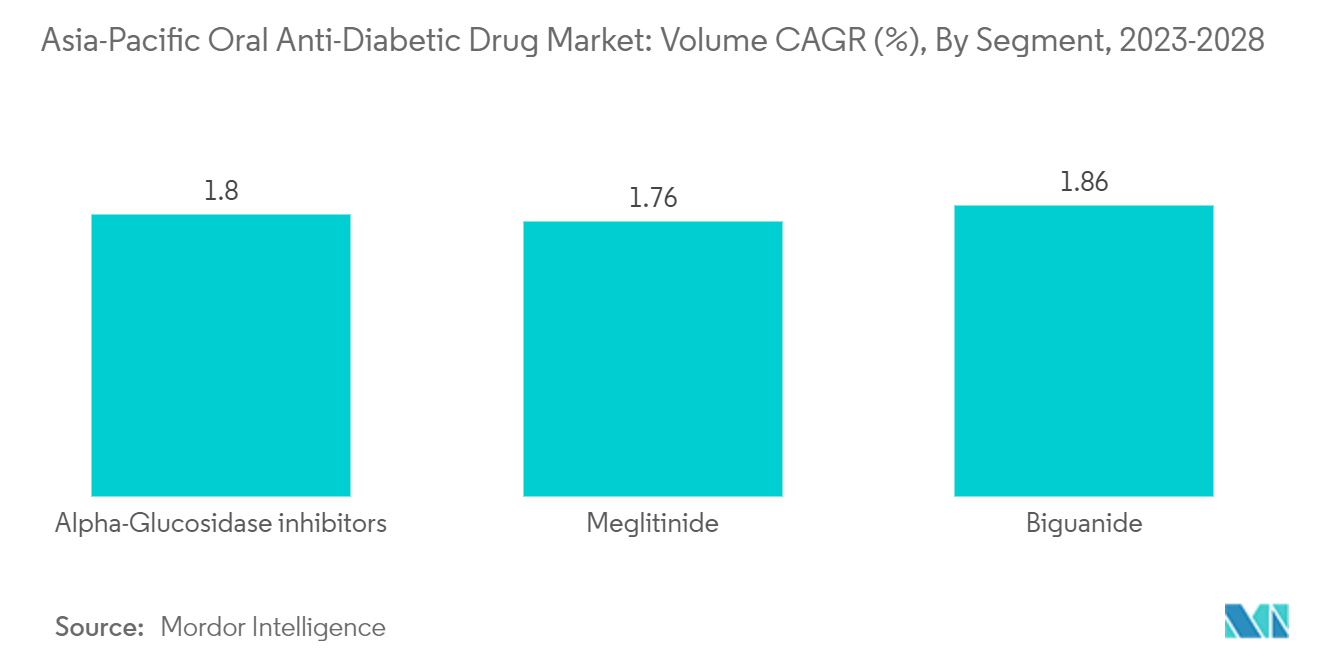
In the Asia-Pacific Oral Anti-Diabetes Medications Market, China and Japan hold more than 25% of the market share.
Due to the rising number of diabetics in Asia-Pacific, China, and Japan have been identified as prospective growth markets. Being a mature market, Japan has a number of difficulties, including weak economic development, an aging population, and rising competition. Patients with type-2 diabetes in this region are increasingly choosing oral anti-diabetics, which has fueled the expansion of the market under study.
The largest market share and the largest contributor to the global diabetes medicine market are both held by China. There are now a lot more companies in the nation making generic medications. The dominant international businesses in the sector under study are also up against fierce regional competition. The Ministry of Health, Labour, and Welfare has designated diabetes as a top healthcare priority. There is a large economic cost associated with the high prevalence of type 2 diabetes. Those with co-morbid conditions like hypertension and hyperlipidemia, as well as those who experience complications, have higher diabetes expenditures. Prices increase as there are more issues. Diabetics can freely see doctors in Japan because of well-organized medical insurance systems that pay for all costs associated with treating diabetes mellitus.
Moreover, self-injection of insulin for therapy has been made lawful and is now covered by insurance. The Japan Association for Diabetes Education and Care runs a few disease management initiatives for the Japanese healthcare system. In terms of diabetes public health policies, Japan is one of the Asia-Pacific region's leaders. These benefits have aided in these items' increased market adoption in Japan.
It is therefore anticipated to drive the category expansion during the forecast period as a result of the aforementioned factors.
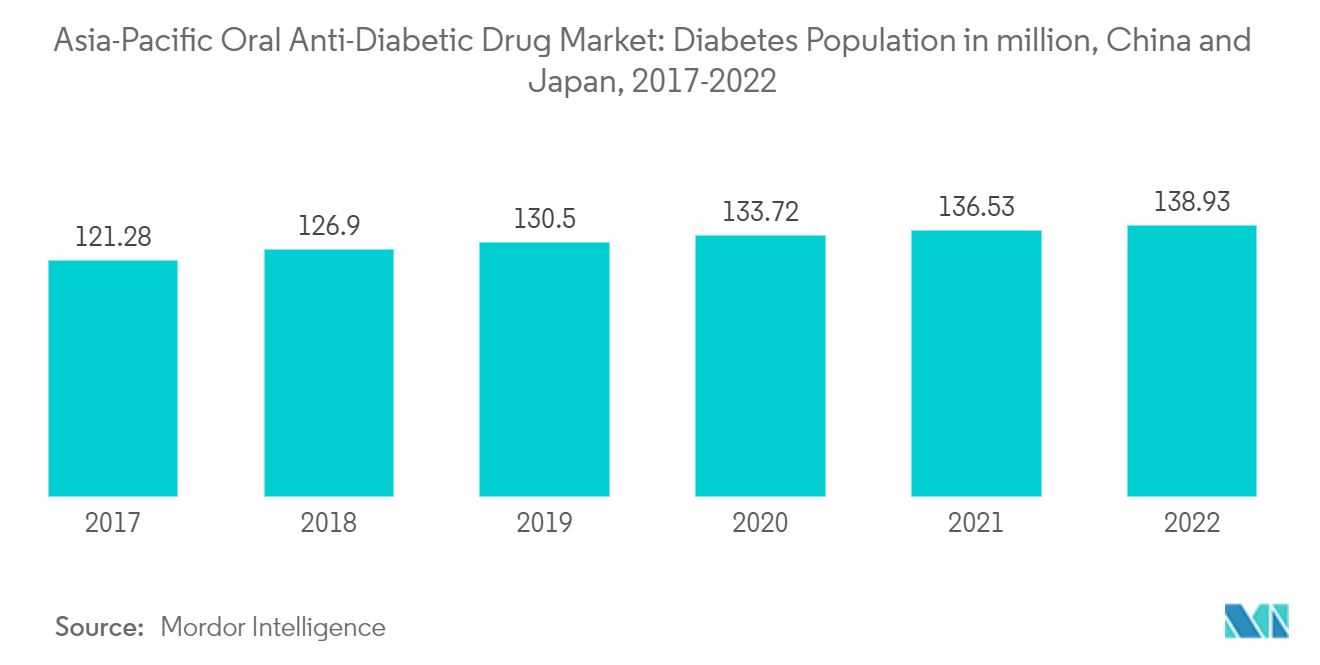
APAC Oral Anti-Diabetic Drug Industry Overview
The Asia-Pacific oral anti-diabetes drug market is consolidated, with a few major manufacturers like Eli Lilly, AstraZeneca, Sanofi, and Janssen Pharmaceuticals having a global market presence. In contrast, the remaining manufacturers are confined to the other local or regional markets. Companies are focusing on innovations in diabetes drugs.
APAC Oral Anti-Diabetic Drug Market Leaders
-
Sanofi
-
Eli Lily
-
Astellas
-
Astrazeneca
-
Janssen
*Disclaimer: Major Players sorted in no particular order
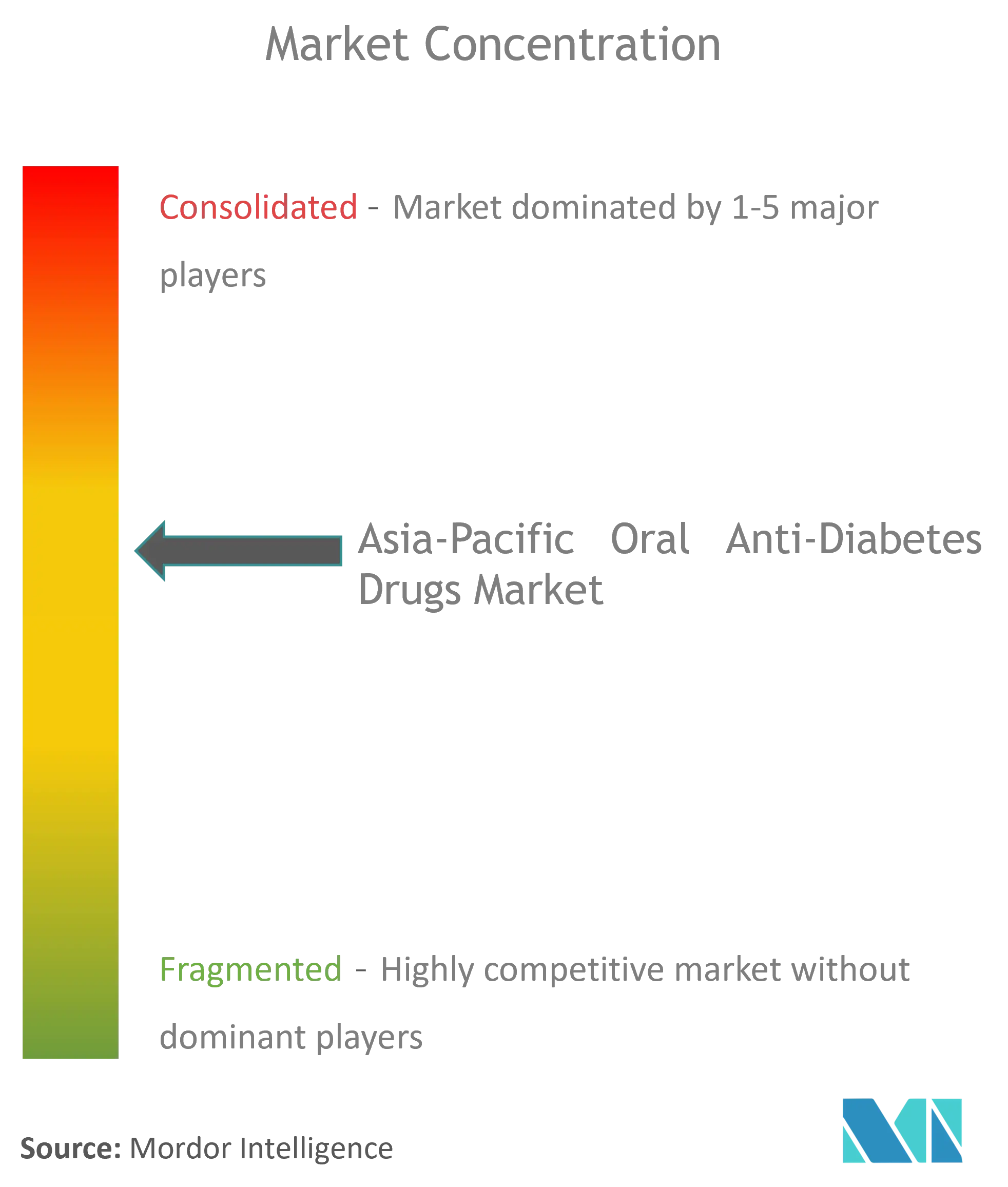
APAC Oral Anti-Diabetic Drug Market News
- March 2022: Oramed announced ORMD-0801 (a new molecule) is being evaluated in two pivotal Phase 3 trials and can be the first oral insulin capsule that has the most convenient and safest way to deliver insulin therapy. This drug is expected to be a game-changer in the insulin and oral anti-diabetes drugs markets. Oramed also develops an oral GLP-1 (Glucagon-like peptide-1) analog capsule (ORMD-0901).
- Feb 2022: Eurofarma, the pharmaceutical company that most heavily invests in innovation in Brazil, is launching Suganon (evogliptin) in Latin America, an innovative therapy for type 2 diabetes patients. Suganon (evogliptin) is a new DPP-4 enzyme inhibitor, which features the benefits of offering convenient dosing, as well as having a low potential for interaction with other medications, ensuring greater ease and safety for prescribers and type 2 diabetes patients. The new drug for oral use was specifically studied in the Brazilian population in 10 national research centers located in the North, Northeast, Southeast, and Distrito Federal regions, demonstrating efficacy (average reduction of HbA1c greater than 1) in glycemic control.
APAC Oral Anti-Diabetic Drug Market Report - Table of Contents
1. INTRODUCTION
- 1.1 Study Assumptions and Market Definition
- 1.2 Scope of the Study
2. RESEARCH METHODOLOGY
3. EXECUTIVE SUMMARY
4. MARKET DYNAMICS
- 4.1 Market Overview
- 4.2 Market Drivers
- 4.3 Market Restraints
-
4.4 Porter's Five Forces Analysis
- 4.4.1 Bargaining Power of Suppliers
- 4.4.2 Bargaining Power of Consumers
- 4.4.3 Threat of New Entrants
- 4.4.4 Threat of Substitute Products and Services
- 4.4.5 Intensity of Competitive Rivalry
5. MARKET SEGMENTATION
-
5.1 Oral Anti-diabetic drugs (Value and Volume, 2017 - 2028)
- 5.1.1 Biguanides
- 5.1.1.1 Metformin
- 5.1.2 Alpha-Glucosidase Inhibitors
- 5.1.2.1 Alpha-Glucosidase Inhibitors
- 5.1.3 Dopamine D2 receptor agonist
- 5.1.3.1 Bromocriptin
- 5.1.4 SGLT-2 inhibitors
- 5.1.4.1 Invokana (Canagliflozin)
- 5.1.4.2 Jardiance (Empagliflozin)
- 5.1.4.3 Farxiga/Forxiga (Dapagliflozin)
- 5.1.4.4 Suglat (Ipragliflozin)
- 5.1.5 DPP-4 inhibitors
- 5.1.5.1 Onglyza (Saxagliptin)
- 5.1.5.2 Tradjenta (Linagliptin)
- 5.1.5.3 Vipidia/Nesina(Alogliptin)
- 5.1.5.4 Galvus (Vildagliptin)
- 5.1.6 Sulfonylureas
- 5.1.6.1 Sulfonylureas
- 5.1.7 Meglitinides
- 5.1.7.1 Meglitinides
-
5.2 Geography
- 5.2.1 Japan (Value and Volume 2017-2028)
- 5.2.1.1 By Drug (Biguanides, Alpha-glucosidase Inhibitors, Dopamine-D2 Receptor Agonists, SGLT-2 Inhibitors, DPP-4 Inhibitors, Sulfonylureas, Meglitinides)
- 5.2.2 South Korea (Value and Volume 2017-2028)
- 5.2.2.1 By Drug (Biguanides, Alpha-glucosidase Inhibitors, Dopamine-D2 Receptor Agonists, SGLT-2 Inhibitors, DPP-4 Inhibitors, Sulfonylureas, Meglitinides)
- 5.2.3 China (Value and Volume 2017-2028)
- 5.2.3.1 By Drug (Biguanides, Alpha-glucosidase Inhibitors, Dopamine-D2 Receptor Agonists, SGLT-2 Inhibitors, DPP-4 Inhibitors, Sulfonylureas, Meglitinides)
- 5.2.4 India (Value and Volume 2017-2028)
- 5.2.4.1 By Drug (Biguanides, Alpha-glucosidase Inhibitors, Dopamine-D2 Receptor Agonists, SGLT-2 Inhibitors, DPP-4 Inhibitors, Sulfonylureas, Meglitinides)
- 5.2.5 Australia (Value and Volume 2017-2028)
- 5.2.5.1 By Drug (Biguanides, Alpha-glucosidase Inhibitors, Dopamine-D2 Receptor Agonists, SGLT-2 Inhibitors, DPP-4 Inhibitors, Sulfonylureas, Meglitinides)
- 5.2.6 Vietnam (Value and Volume 2017-2028)
- 5.2.6.1 By Drug (Biguanides, Alpha-glucosidase Inhibitors, Dopamine-D2 Receptor Agonists, SGLT-2 Inhibitors, DPP-4 Inhibitors, Sulfonylureas, Meglitinides)
- 5.2.7 Malaysia (Value and Volume 2017-2028)
- 5.2.7.1 By Drug (Biguanides, Alpha-glucosidase Inhibitors, Dopamine-D2 Receptor Agonists, SGLT-2 Inhibitors, DPP-4 Inhibitors, Sulfonylureas, Meglitinides)
- 5.2.8 Indonesia (Value and Volume 2017-2028)
- 5.2.8.1 By Drug (Biguanides, Alpha-glucosidase Inhibitors, Dopamine-D2 Receptor Agonists, SGLT-2 Inhibitors, DPP-4 Inhibitors, Sulfonylureas, Meglitinides)
- 5.2.9 Philippines (Value and Volume 2017-2028)
- 5.2.9.1 By Drug (Biguanides, Alpha-glucosidase Inhibitors, Dopamine-D2 Receptor Agonists, SGLT-2 Inhibitors, DPP-4 Inhibitors, Sulfonylureas, Meglitinides)
- 5.2.10 Thailand (Value and Volume 2017-2028)
- 5.2.10.1 By Drug (Biguanides, Alpha-glucosidase Inhibitors, Dopamine-D2 Receptor Agonists, SGLT-2 Inhibitors, DPP-4 Inhibitors, Sulfonylureas, Meglitinides)
- 5.2.11 Rest of Asia-Pacific (Value and Volume 2017-2028)
- 5.2.11.1 By Drug (Biguanides, Alpha-glucosidase Inhibitors, Dopamine-D2 Receptor Agonists, SGLT-2 Inhibitors, DPP-4 Inhibitors, Sulfonylureas, Meglitinides)
6. MARKET INDICATORS
- 6.1 Type-1 Diabetic Population (2017 - 2028)
- 6.2 Type-2 Diabetic Population (2017 - 2028)
7. COMPETITIVE LANDSCAPE
-
7.1 COMPANY PROFILES
- 7.1.1 Takeda
- 7.1.2 Novo Nordisk
- 7.1.3 Pfizer
- 7.1.4 Eli Lilly
- 7.1.5 Janssen Pharmaceuticals
- 7.1.6 Astellas
- 7.1.7 Boehringer Ingelheim
- 7.1.8 Merck And Co.
- 7.1.9 AstraZeneca
- 7.1.10 Bristol Myers Squibb
- 7.1.11 Novartis
- 7.1.12 Sanofi
- *List Not Exhaustive
8. MARKET OPPORTUNITIES AND FUTURE TRENDS
** Subject To AvailablityAPAC Oral Anti-Diabetic Drug Industry Segmentation
Antihyperglycemic medications are taken orally to lower blood glucose levels. They are frequently employed in the management of type 2 diabetes. The Asia-Pacific Oral Anti-Diabetic Drug Market is set to witness a CAGR of more than 3% during the forecast period. The Asia-Pacific Oral Anti-Diabetic Drug Market is segmented into drugs (Biguanides, Alpha-glucosidase inhibitors, Dopamine-D2 receptor agonists, Sodium-glucose Cotransport-2 (SGLT-2) inhibitor, Dipeptidyl Peptidase-4 (DPP-4) Inhibitors, Sulfonylureas, and Meglitinides), and Geography. The report offers the value (in USD million) and volume (in Units million) for the above segments.
| Oral Anti-diabetic drugs (Value and Volume, 2017 - 2028) | Biguanides | Metformin |
| Oral Anti-diabetic drugs (Value and Volume, 2017 - 2028) | Alpha-Glucosidase Inhibitors | Alpha-Glucosidase Inhibitors |
| Oral Anti-diabetic drugs (Value and Volume, 2017 - 2028) | Dopamine D2 receptor agonist | Bromocriptin |
| Oral Anti-diabetic drugs (Value and Volume, 2017 - 2028) | SGLT-2 inhibitors | Invokana (Canagliflozin) |
| Jardiance (Empagliflozin) | ||
| Farxiga/Forxiga (Dapagliflozin) | ||
| Suglat (Ipragliflozin) | ||
| Oral Anti-diabetic drugs (Value and Volume, 2017 - 2028) | DPP-4 inhibitors | Onglyza (Saxagliptin) |
| Tradjenta (Linagliptin) | ||
| Vipidia/Nesina(Alogliptin) | ||
| Galvus (Vildagliptin) | ||
| Oral Anti-diabetic drugs (Value and Volume, 2017 - 2028) | Sulfonylureas | Sulfonylureas |
| Oral Anti-diabetic drugs (Value and Volume, 2017 - 2028) | Meglitinides | Meglitinides |
| Geography | Japan (Value and Volume 2017-2028) | By Drug (Biguanides, Alpha-glucosidase Inhibitors, Dopamine-D2 Receptor Agonists, SGLT-2 Inhibitors, DPP-4 Inhibitors, Sulfonylureas, Meglitinides) |
| Geography | South Korea (Value and Volume 2017-2028) | By Drug (Biguanides, Alpha-glucosidase Inhibitors, Dopamine-D2 Receptor Agonists, SGLT-2 Inhibitors, DPP-4 Inhibitors, Sulfonylureas, Meglitinides) |
| Geography | China (Value and Volume 2017-2028) | By Drug (Biguanides, Alpha-glucosidase Inhibitors, Dopamine-D2 Receptor Agonists, SGLT-2 Inhibitors, DPP-4 Inhibitors, Sulfonylureas, Meglitinides) |
| Geography | India (Value and Volume 2017-2028) | By Drug (Biguanides, Alpha-glucosidase Inhibitors, Dopamine-D2 Receptor Agonists, SGLT-2 Inhibitors, DPP-4 Inhibitors, Sulfonylureas, Meglitinides) |
| Geography | Australia (Value and Volume 2017-2028) | By Drug (Biguanides, Alpha-glucosidase Inhibitors, Dopamine-D2 Receptor Agonists, SGLT-2 Inhibitors, DPP-4 Inhibitors, Sulfonylureas, Meglitinides) |
| Geography | Vietnam (Value and Volume 2017-2028) | By Drug (Biguanides, Alpha-glucosidase Inhibitors, Dopamine-D2 Receptor Agonists, SGLT-2 Inhibitors, DPP-4 Inhibitors, Sulfonylureas, Meglitinides) |
| Geography | Malaysia (Value and Volume 2017-2028) | By Drug (Biguanides, Alpha-glucosidase Inhibitors, Dopamine-D2 Receptor Agonists, SGLT-2 Inhibitors, DPP-4 Inhibitors, Sulfonylureas, Meglitinides) |
| Geography | Indonesia (Value and Volume 2017-2028) | By Drug (Biguanides, Alpha-glucosidase Inhibitors, Dopamine-D2 Receptor Agonists, SGLT-2 Inhibitors, DPP-4 Inhibitors, Sulfonylureas, Meglitinides) |
| Geography | Philippines (Value and Volume 2017-2028) | By Drug (Biguanides, Alpha-glucosidase Inhibitors, Dopamine-D2 Receptor Agonists, SGLT-2 Inhibitors, DPP-4 Inhibitors, Sulfonylureas, Meglitinides) |
| Geography | Thailand (Value and Volume 2017-2028) | By Drug (Biguanides, Alpha-glucosidase Inhibitors, Dopamine-D2 Receptor Agonists, SGLT-2 Inhibitors, DPP-4 Inhibitors, Sulfonylureas, Meglitinides) |
| Geography | Rest of Asia-Pacific (Value and Volume 2017-2028) | By Drug (Biguanides, Alpha-glucosidase Inhibitors, Dopamine-D2 Receptor Agonists, SGLT-2 Inhibitors, DPP-4 Inhibitors, Sulfonylureas, Meglitinides) |
APAC Oral Anti-Diabetic Drug Market Research FAQs
How big is the Asia-Pacific Oral Anti-Diabetic Drug Market?
The Asia-Pacific Oral Anti-Diabetic Drug Market size is expected to reach USD 25.37 billion in 2024 and grow at a CAGR of 3.10% to reach USD 29.56 billion by 2029.
What is the current Asia-Pacific Oral Anti-Diabetic Drug Market size?
In 2024, the Asia-Pacific Oral Anti-Diabetic Drug Market size is expected to reach USD 25.37 billion.
Who are the key players in Asia-Pacific Oral Anti-Diabetic Drug Market?
Sanofi, Eli Lily, Astellas, Astrazeneca and Janssen are the major companies operating in the Asia-Pacific Oral Anti-Diabetic Drug Market.
What years does this Asia-Pacific Oral Anti-Diabetic Drug Market cover, and what was the market size in 2023?
In 2023, the Asia-Pacific Oral Anti-Diabetic Drug Market size was estimated at USD 24.61 billion. The report covers the Asia-Pacific Oral Anti-Diabetic Drug Market historical market size for years: 2019, 2020, 2021, 2022 and 2023. The report also forecasts the Asia-Pacific Oral Anti-Diabetic Drug Market size for years: 2024, 2025, 2026, 2027, 2028 and 2029.
Asia-Pacific Oral Anti-Diabetic Drug Industry Report
Statistics for the 2024 Asia-Pacific Oral Anti-Diabetic Drug market share, size and revenue growth rate, created by Mordor Intelligence™ Industry Reports. Asia-Pacific Oral Anti-Diabetic Drug analysis includes a market forecast outlook to 2029 and historical overview. Get a sample of this industry analysis as a free report PDF download.



